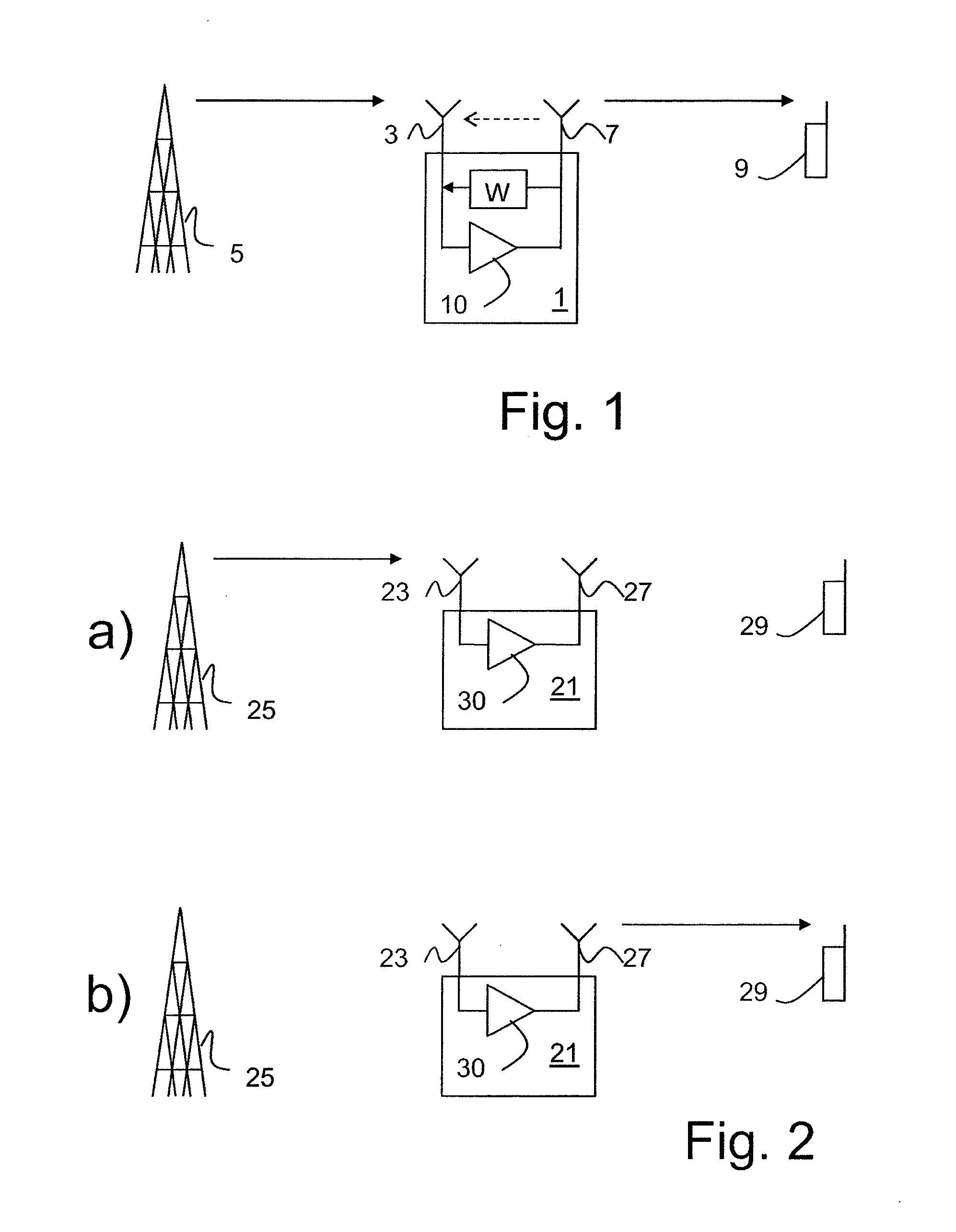Node and a Method for use in a Wireless Communications System
- Summary
- Abstract
- Description
- Claims
- Application Information
AI Technical Summary
Benefits of technology
Problems solved by technology
Method used
Image
Examples
Embodiment Construction
[0034]FIG. 1 illustrates an on-frequency repeater function, that is, the repeater receives and transmits on the same resource at substantially the same time, hence causing self interference from the output to the input, although in practice there will always be a small delay. The repeater 1 comprises a receive antenna 3 arranged to receive a signal from a base station 5 and a transmit antenna 7 arranged to forward the signal to a mobile terminal 9. An amplifier 10 provides a gain between the receive antenna 3 and the transmit antenna 7. The signal is forwarded on the same resource on which it was received. This means that the repeater 1 uses the same frequency, non-orthogonal coding etc. and forwards the signal immediately upon receiving it.
[0035]Such repeaters are prone to self-interference, and are therefore typically designed so that the transmit and receive antennas are isolated from each other to the extent possible. As discussed above self-interference cancellation methods bas...
PUM
 Login to View More
Login to View More Abstract
Description
Claims
Application Information
 Login to View More
Login to View More - R&D
- Intellectual Property
- Life Sciences
- Materials
- Tech Scout
- Unparalleled Data Quality
- Higher Quality Content
- 60% Fewer Hallucinations
Browse by: Latest US Patents, China's latest patents, Technical Efficacy Thesaurus, Application Domain, Technology Topic, Popular Technical Reports.
© 2025 PatSnap. All rights reserved.Legal|Privacy policy|Modern Slavery Act Transparency Statement|Sitemap|About US| Contact US: help@patsnap.com



